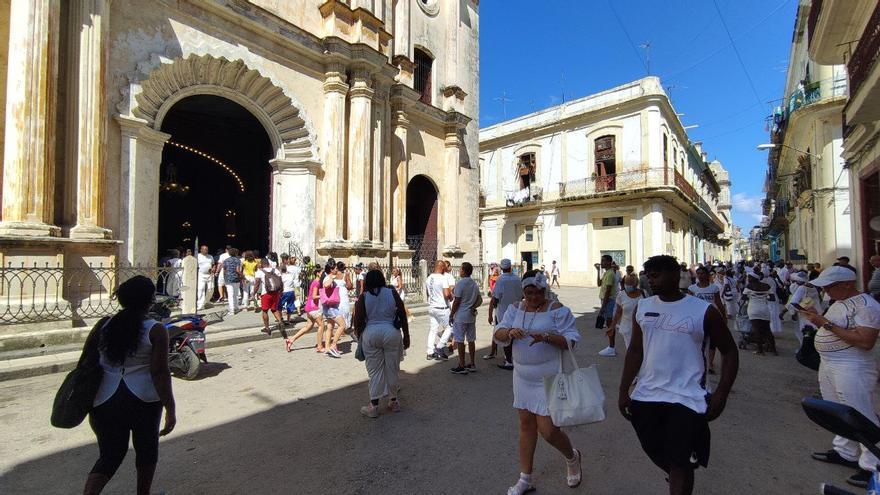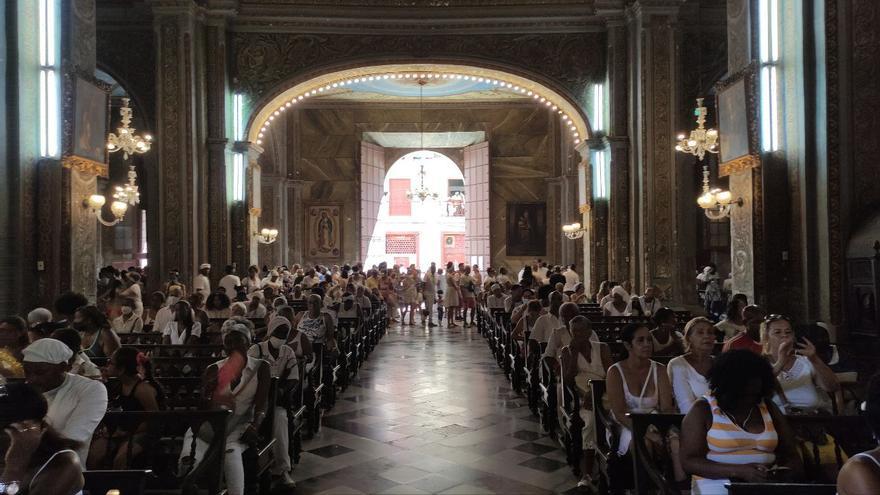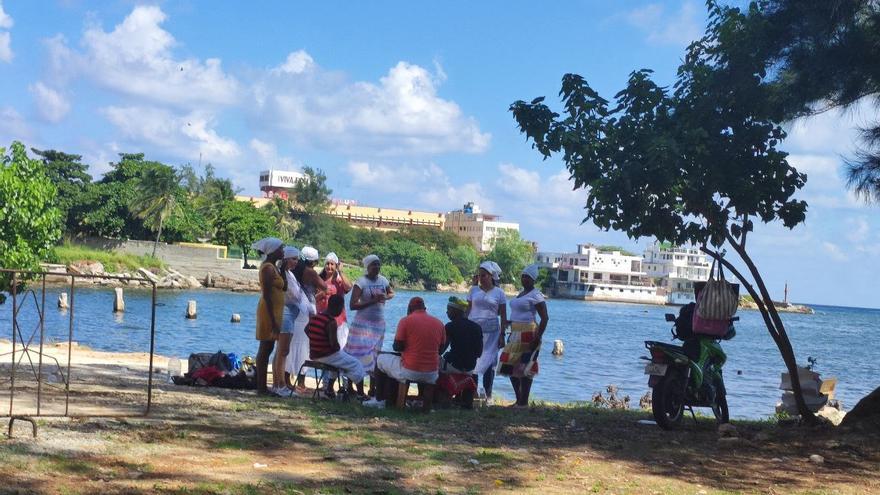
![]() 14ymedio, Juan Diego Rodríguez, Havana, 24 September 2022 — On an island with more than a thousand political prisoners, the patron saint of prisoners has become the image before which countless Cuban families pray. On September 24, the patron saint of inmates received flowers and candles in her parish on Cuba Street, in Old Havana, under the watchful eye of a police operation with uniformed and civilian agents.
14ymedio, Juan Diego Rodríguez, Havana, 24 September 2022 — On an island with more than a thousand political prisoners, the patron saint of prisoners has become the image before which countless Cuban families pray. On September 24, the patron saint of inmates received flowers and candles in her parish on Cuba Street, in Old Havana, under the watchful eye of a police operation with uniformed and civilian agents.
Dressed mostly in white, in honor of the Virgin and the great orisha Obbatalá, with whom the Virgin is syncretized in the Santeria religion, residents from the vicinity arrived throughout the day and also others who traveled from distant municipalities. Most of them were united by a special reason: to pray for people locked up in prison, in a country with more than 90,000 prisoners.
From early in the morning, several tables were placed outside the temple for the private sale of prints, religious accessories, flowers and other offerings dedicated to the Virgin. But inflation hurt the enthusiasm of buyers, who widened their eyes when they heard that each candle cost 50 pesos. Many decided to retrace their steps and enter the temple empty-handed.

The flowers also were more expensive, and the small bouquets, with only a few butterflies, cost 100 pesos, while others a little more elaborate and with more variety cost about 400. For residents of the poor neighborhood of San Isidro, where the church of Nuestra Señora de la Merced is located, paying such prices means a choice between putting something on the table and spending a good part of their salary on stems and petals.
The priest who accompanied the prayer requested a plea “for the future of the Cuban homeland and the children.” The request was followed by entreaties and hands that came together to pray. There was also no shortage of those who brought an image of a relative sentenced to prison to accompany them inside the church and at the time of approaching the altar with the image of the Virgin.
In other parts of Havana, such as the mouth of the Almendares River, a group of practitioners of Santeria also joined in a ceremony to remember the orisha as the “creator of the earth and sculptor of being.” White clothes were more common in the city throughout the day, and there was no shortage of domestic ceremonies with prayers for Cubans imprisoned in the hands of traffickers and coyotes during their migratory route.

The numerous Cuban women, especially those over 50, who were named “Mercedes” or “Mercy,” in honor of the Virgin, also celebrated, although on this occasion white meringue cakes — so characteristic of these syncretic celebrations — were scarce due to the lack of flour and eggs. The economic crisis forced Cubans to celebrate more modestly but just as emotionally as in other years.
Translated by Regina Anavy
____________
COLLABORATE WITH OUR WORK: The 14ymedio team is committed to practicing serious journalism that reflects Cuba’s reality in all its depth. Thank you for joining us on this long journey. We invite you to continue supporting us by becoming a member of 14ymedio now. Together we can continue transforming journalism in Cuba.
